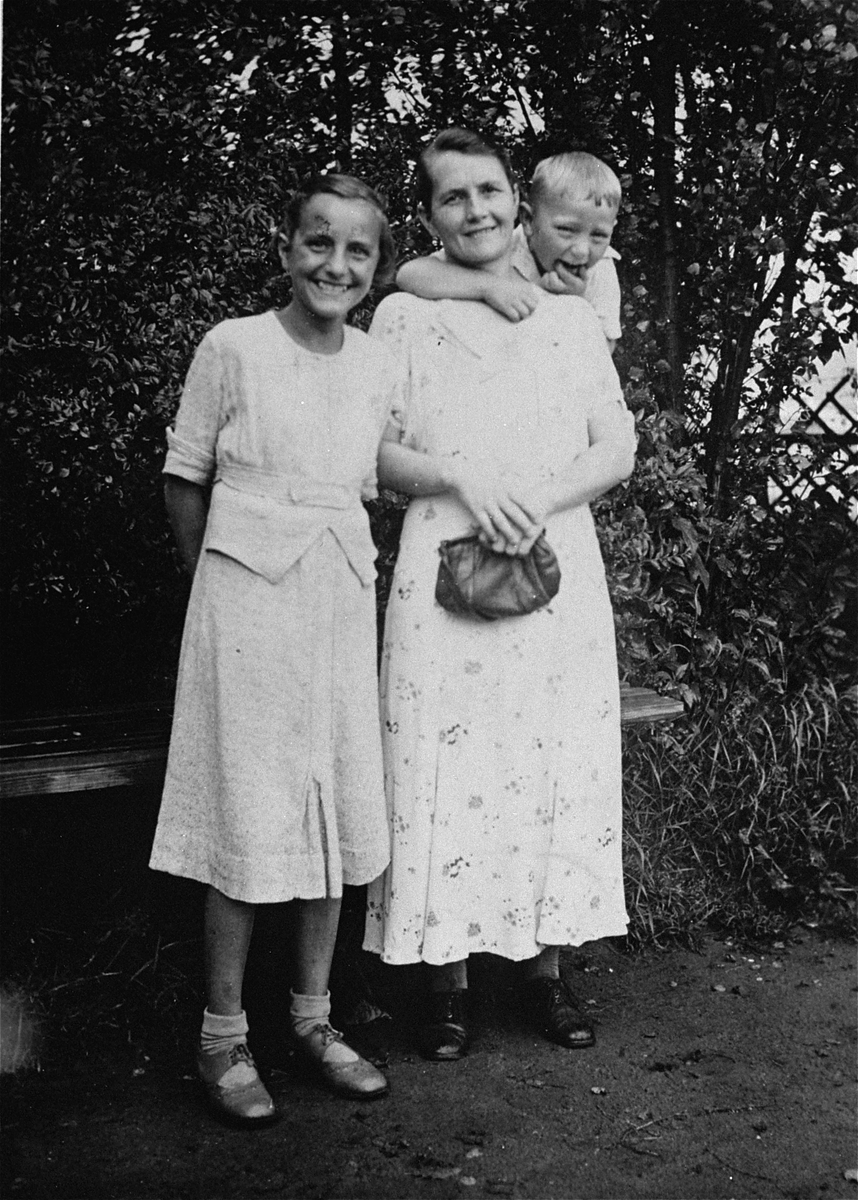Source

Source: Helene Gotthold with her children Gerd and Gisela. Photograph, June 25, 1936. United States Holocaust Memorial Museum, courtesy of Martin Tillmans.
Jehovah’s Witnesses faced severe persecution under the Nazi regime from very early on. According to their beliefs, no practicing Jehovah’s Witness can pledge loyalty to an earthly kingdom; nor can he or she serve in a state’s army. These beliefs and the Witnesses’ rejection of Protestant and Catholic readings of the Bible made them easily susceptible to religious persecution in Germany. In 1934, after appealing to the regime to let them live in peace and practice their religion, Hitler and his government forbade their congregation. By 1939, 6,000 Jehovah’s Witnesses had been arrested. The Gestapo tried to force them to renounce their religious beliefs and pledge allegiance to the Führer. Thousands more were also deported to concentration camps where they were forced to wear a purple triangle. Of the 2,500 Jehovah’s Witnesses that were estimated to have been imprisoned in concentration camps across Europe, 1,000 died from various forms of physical abuse, hunger, and execution.
This image depicts Helene Gotthold and her two children Gerd and Gisela. Helene and her husband were practicing Jehovah’s Witnesses when the Nazis came to power in 1933. While pregnant, she was arrested in 1937. The Gestapo beat her, causing her to have a miscarriage. After her release, her family tried to live quietly. However, in 1944, Helene was arrested again after surreptitiously holding a Bible meeting with her fellow Jehovah’s Witnesses. She was executed by guillotine at Berlin’s Plötzensee Prison in December 1944 after a summary trial.

Source: Helene Gotthold with her children Gerd and Gisela. Photograph, June 25, 1936. United States Holocaust Memorial Museum, courtesy of Martin Tillmans.